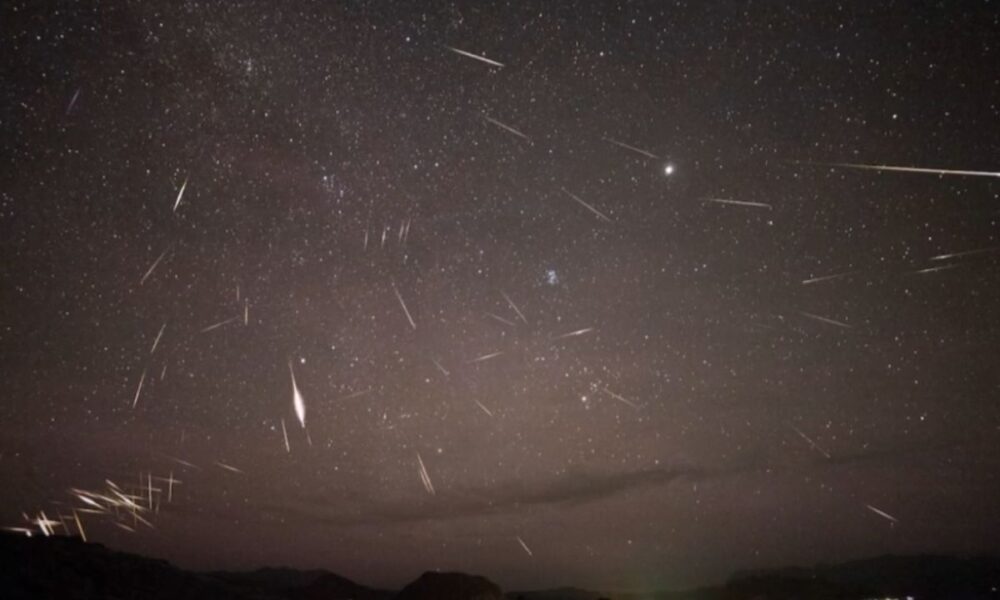The Perseid meteor shower, one of the year’s most dazzling celestial events, will reach its peak on the night of August 12-13, offering a chance to see up to 100 shooting stars per hour under ideal conditions.
However, a bright waning gibbous moon, 86% illuminated, will obscure many fainter meteors, making this year’s display a challenge for skywatchers.
The Perseids are caused by Earth passing through debris from comet 109P/Swift-Tuttle and are known for their vibrant colors and frequent fireballs — bright meteors that can outshine the moonlight. Click here to view a slideshow of the Perseids from around the world taken in 2023 when the Perseid shower was particularly vivid.
This year, “The best rates will probably be near 15 per hour as dim meteors make up a majority of the activity,” said Robert Lunsford of the American Meteor Society, per Space.com.
“You can watch for long Perseid earthgrazers as soon as it gets dark until the moon begins to interfere. This will be about an hour for most folks,” Lunsford said.
These early meteors, visible from 10 p.m. local time on Tuesday, may appear long and striking, though fewer in number.
However, for the best viewing, head to a dark-sky location in the predawn hours of August 13, when the shower is most active. Lunsford advised observing between 1 a.m. and 5 a.m. local time, looking north with the moon at your back, to catch up to 15 meteors per hour.
The shower’s radiant, the point from which meteors appear to originate, lies near the star Eta Persei in the constellation Perseus, located in the northeastern sky on August 12, with the moon and Saturn to its right. To maximize viewing, locate the radiant using a smartphone astronomy app and focus on a spot about 40 degrees above it, where meteor trails are longest. A clenched fist held at arm’s length spans roughly 10 degrees of sky.
The Perseids, active from July 14 to September 1, are named for the constellation Perseus. In ancient Greek lore, the shower was linked to Zeus visiting Danaë in a shower of gold.
Unlike rocky meteorites, Perseid meteors — cometary debris — rarely reach the ground due to their icy composition. They typically burn up about 60 miles above the Earth.
“The peak [date] is the best time to view regardless of the situation with moonlight,” Lunsford said, per Space.com. “Rates fall by 50% each night after the peak, so by the time the moon is out of the way, there is little left to watch.”
Under ideal dark-sky conditions, 60 to 90 meteors per hour are typical, but moonlight may reduce this to 10 to 20 per hour in 2025. Skywatchers can report fireballs to the American Meteor Society.


